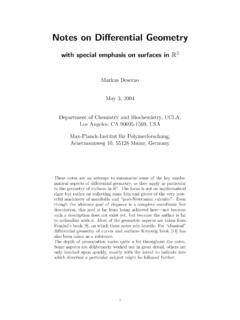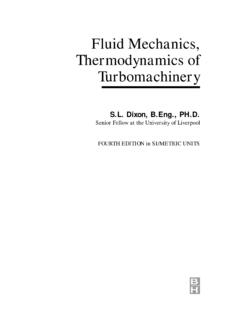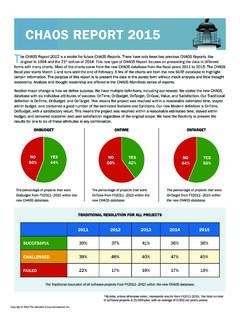Transcription of EE2EE2--4: Communication Systems4: Communication …
1 EE2--4: Communication Systems EE2. Dr. Cong Ling Department of Electrical and Electronic Engineering 1. Course Information Lecturer: Dr. Cong Ling (Senior Lecturer). Office: Room 815, EE Building Phone: 020-7594. 020 7594 6214. Email: Handouts Slides: exam is based on slides Notes: contain more details Problem sheets Course homepage ~cling You Y can access llecture t slides/problem lid / bl sheets/past h t / t papers Also available in Blackboard Grading g exam, no-choice, closed-book 2. Lectures Introduction and background Digital communications 1.
2 Introduction 8. Digital representation of signals 2. Probability and random 9. Baseband digital transmission processes 10. Digital modulation 3 Noise 3. 11 Noncoherent 11. N h td demodulation d l ti Effects of noise on analog Information theory communications 12 Entropy and source coding 12. 4. Noise performance of DSB 13. Channel capacity 5. Noise performance of SSB and 14. Block codes AM. 15. Cyclic codes 6. Noise performance of FM. 7. Pre/de-emphasis p for FM and comparison of analog systems 3. EE2--4 vs. EE1- EE2 EE1-6.
3 Introduction to Signals and Communications How do Communication systems work? About modulation, demodulation, signal The main mathematical tool is the Fourier transform for deterministic signal analysis. More about analog communications ( , signals are continuous). Communications C. How do Communication systems perform in the presence of noise? About statistical aspects and noise. noise This is essential for a meaningful comparison of various communications systems. The main mathematical tool is probability. probability More about digital communications ( , signals are discrete).
4 4. Learning Outcomes Describe a suitable model for noise in communications Determine the signal signal-to-noise to noise ratio (SNR) performance of analog communications systems Determine the probability of error for digital communications systems Understand information theoryy and its significance g in determining system performance Compare the performance of various communications systems 5. About the Classes You're welcome to ask questions. You can interrupt p me at any y time. Please don't disturb others in the class.
5 Our responsibility is to facilitate you to learn. You have to make the effort effort. Spend time reviewing lecture notes afterwards. If yyou have a question q on the lecture material after a class, then Look up a book! Be resourceful. Try to work it out yourself. yourself Ask me during the problem class or one of scheduled times of availability. 6. References C. Ling, Notes of Communication Systems, Imperial Collage. S Haykin & M. S. M. Moher Moher, Communication Systems, 5th ed., International Student Version, Wiley, 2009 ( from Wiley).
6 Y , Communication Systems, S. Haykin, y , 4th ed.,, Wiley, 2001. Owns the copyright of many figures in these slides. For F convenience, i th note the t 2000 WilWiley, Haykin/ Communication System, 4 ed. is not th shown for each figure. B P Lathi, Lathi modern Digital and Analog Communication Systems, 3rd ed., Oxford University Press, 1998. Proakis and M. Salehi,, Communication Systems Engineering, Prentice-Hall, 1994. Couch II, Digital and Analog Communication Systems, 6th ed., Prentice- H ll 2001. Hall, 7. Multitude of Communications Telephone network Internet Radio and TV broadcast Mobile communications Wi-Fi Satellite and space communications Smart power grid, healthcare.
7 Analogue communications AM, FM. Digital communications Transfer of information in digits Dominant technology today Broadband, 3G, DAB/DVB. 8. What's Communications? Communication involves the transfer of information from one point to another. Three basic elements Transmitter: converts message into a form suitable for transmission Channel: the physical medium, introduces distortion, noise, interference Receiver: R i reconstruct t t a recognizable i bl fform off the th message Speech Music Pictures Data . 9. Communication Channel The channel is central to operation of a Communication y system Linear ( , mobile radio) or nonlinear ( , satellite).
8 Time invariant ( , fiber) or time varying ( , mobile radio). The information-carrying capacity of a Communication system is proportional to the channel bandwidth Pursuit for wider bandwidth Copper wire: 1 MHz Coaxial cable: 100 MHz Microwave: GHz Optical fiber: THz Uses light as the signal carrier Highest capacity among all practical signals 10. Noise in Communications Unavoidable presence of noise in the channel Noise refers to unwanted waves that disturb communications Signal is contaminated by noise along the path.
9 External noise: interference from nearby channels, human- made noise, natural Internal noise: thermal noise, random in electronic devices Noise is one of the basic factors that set limits on communications. i ti A widely used metric is the signal-to-noise (power) ratio (SNR). signal power SNR= noise p power 11. Transmitter and Receiver The transmitter modifies the message signal into a form suitable for transmission over the channel This modification often involves modulation Moving the signal to a high-frequency carrier (up-conversion) and varying some parameter of the carrier wave Analog: AM, FM, PM.
10 Digital: ASK. ASK, FSK, FSK PSK (SK: shift keying). The receiver recreates the original message by demodulation Recovery is not exact due to noise/distortion The resulting degradation is influenced by the type of modulation Design of analog Communication is conceptually simple g Digital Communication is more efficient and reliable; design g is more sophisticated 12. Objectives of System Design Two primary resources in communications Transmitted p power ((should be g green)). Channel bandwidth (very expensive in the commercial market).



